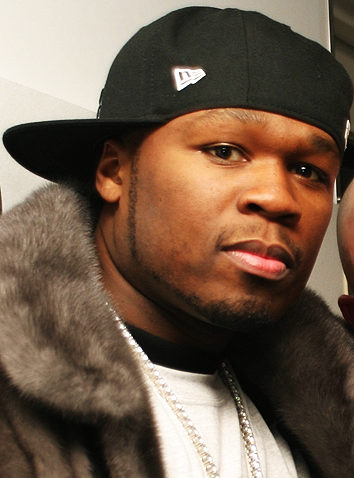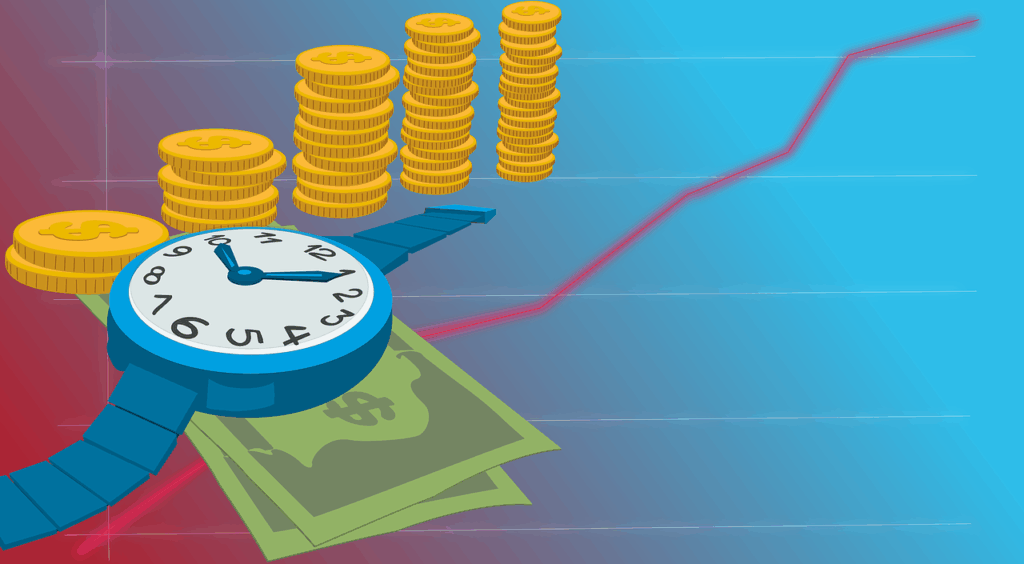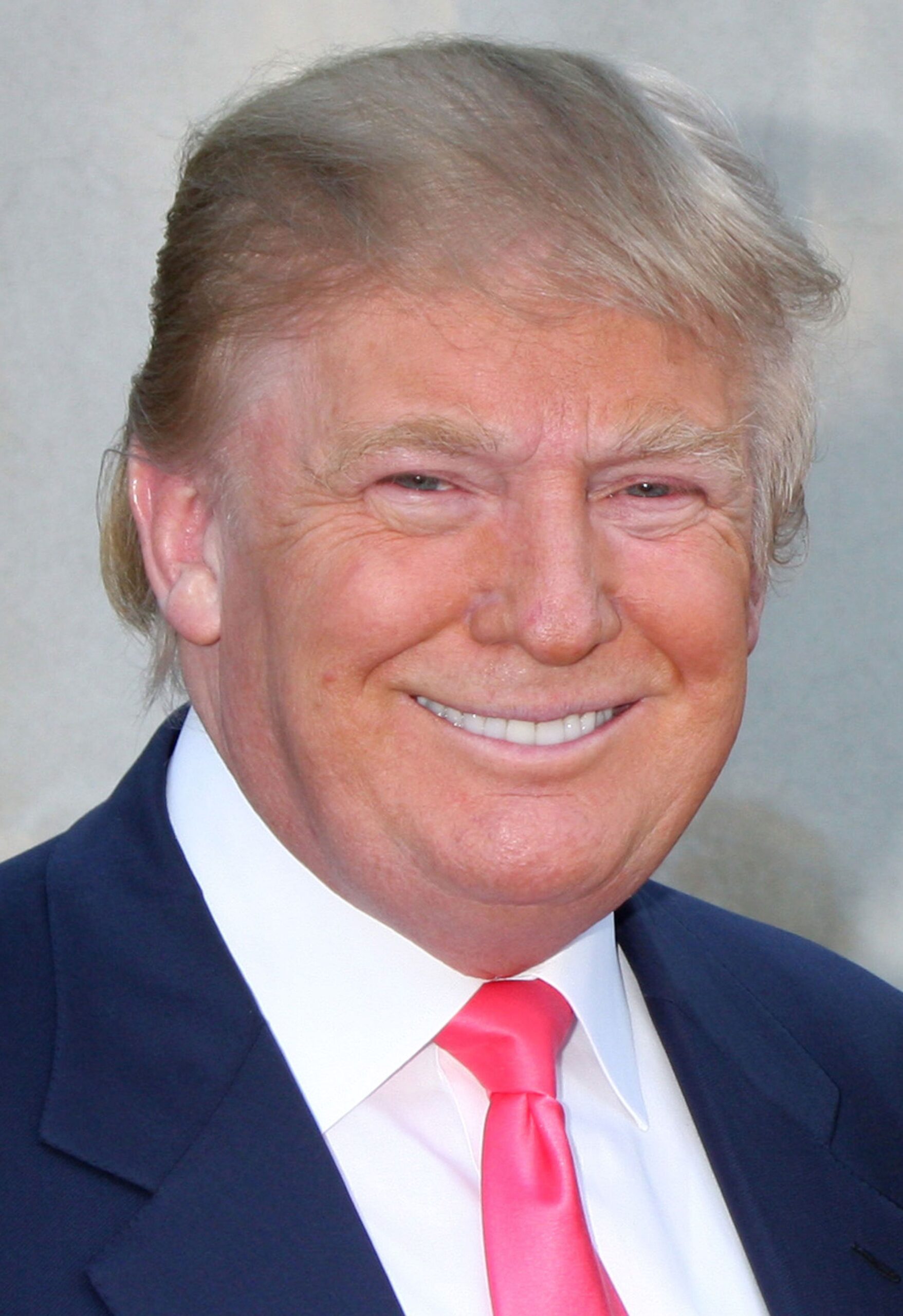Cryptocurrency and NFTs burst onto the scene with promises of revolutionizing industries, none more so than music. For artists, this burgeoning digital frontier opened up exciting new avenues to connect directly with fans, bypass traditional gatekeepers, and monetize their creative output in unprecedented ways. The allure of decentralization, direct royalty control, and innovative fan engagement proved irresistible to many, including some of the biggest names in music like Eminem, KSI, and Steve Aoki.
Yet, as with any nascent and rapidly evolving technology, this journey has been far from a smooth ride. Beneath the shiny facade of innovation and potential profit, the music industry’s venture into the blockchain space has exposed significant real risks. From unexpected financial windfalls to devastating losses, and from intellectual property theft to complex legal battles, the stories emerging from this intersection of music and crypto paint a complex picture.
This article delves into the experiences of prominent music figures, exploring both the initial promise that drew them in and the harsh realities they encountered. We’ll examine individual triumphs and cautionary tales, shedding light on the unpredictable nature of digital assets and the critical lessons learned by those who dared to step onto this new frontier.

1. **Eminem’s Stolen Tracks and the Bitcoin Betrayal**
The digital age has consistently challenged artists in protecting their creative output, and the intersection of music, data, and crypto has only amplified these complexities. In 2024, the renowned Rock & Roll Hall of Famer Eminem faced a significant breach when his team uncovered 25 unreleased tracks circulating online, a clear blow to his “creative integrity” as he later stated. This incident highlighted the vulnerabilities artists face, even with sophisticated security measures in place.
Federal prosecutors traced the leak back to Joseph Strange, a former sound engineer. Following his termination in 2021, Strange allegedly exploited his past access by selling these unreleased Eminem tracks for a sum of $50,000 in Bitcoin to a Canadian fan. This method of payment underscores how cryptocurrency, while offering anonymity, can also facilitate illicit transactions, making traceability and recovery incredibly challenging for victims.
Despite having signed a severance agreement explicitly barring him from using or distributing Eminem’s work, FBI agents later made a startling discovery. They found handwritten lyrics and a VHS tape of an unreleased music video hidden within Strange’s safe, indicating a premeditated and sustained effort to exploit his former employer’s intellectual property.
The charges leveled against Strange included copyright infringement and interstate trafficking, signaling the seriousness with which authorities are beginning to treat crimes involving digital assets and intellectual property. The leaked tracks spanned a considerable period, from 1999 to 2018, potentially even including early drafts for Eminem’s 2020 LP, “Music To Be Murdered By.” This unfortunate episode serves as a stark reminder of the continuous challenges artists endure in safeguarding their work in an increasingly digital and decentralized world. It certainly raises eyebrows when one considers the album title in question!

2. **50 Cent’s Accidental Bitcoin Fortune**
Long before the widespread frenzy around NFTs captivated the music world, rapper 50 Cent stumbled upon what could only be described as an accidental Bitcoin fortune. His venture into cryptocurrency began in 2014 when he made the progressive decision to accept Bitcoin as payment for his album, “Animal Ambition.” At that time, the price of Bitcoin hovered around $660, a relatively modest figure compared to its future highs.
Fast forward to 2017, and the landscape of cryptocurrency had dramatically transformed. Bitcoin’s value skyrocketed, reaching an unprecedented $20,000. This meteoric rise meant that the Bitcoin 50 Cent had accepted years prior had multiplied exponentially in value. Rumors quickly circulated that 50 Cent had “racked up $7 million in Bitcoin,” though he did say “he converted most coins early.”
However, the story also highlights the capriciousness inherent in the crypto market. While 50 Cent reportedly converted most of his Bitcoin holdings early in the game, had he retained them for a longer period, his earnings from this digital asset could have easily surpassed his traditional album sales. This episode vividly illustrates the “unpredictability of crypto,” a lesson many artists have since learned the hard way.
Without a well-defined strategy, crypto gains can indeed be fleeting. Accepting crypto payments introduces a host of challenges for artists, including complex tax implications and liquidity issues. “Constantly monitoring the values of each cryptocurrency, including not only Bitcoin but also altcoins like LTC to USD, is necessary for making informed decisions that serve your strategy instead of relying on luck.” Gambling instead of saving is a risk many artists have faced.

3. **KSI’s Lessons Learned in Crypto Greed**
The meteoric rise and equally sudden collapse of certain cryptocurrencies have served as a harsh wake-up call for many investors, and British rapper KSI’s experience with the Terra token LUNA stands out as a particularly poignant example. In May 2022, KSI committed a substantial $2.8 million to LUNA, drawn in by the intense market hype and the promise of significant returns. His investment, however, evaporated almost overnight.
Within days of his substantial commitment, the LUNA token experienced a catastrophic collapse. Its value plummeted “from $80 to fractions of a cent,” effectively wiping out KSI’s entire investment. This dramatic downturn sent shockwaves through the crypto community and served as a stark reminder of the extreme volatility inherent in this unregulated market.
KSI openly attributed his misfortune to “FOMO (fear of missing out),” a psychological factor that frequently drives speculative behavior during crypto hype cycles. Unlike traditional stocks, which are often underpinned by company fundamentals, “cryptocurrencies have no fundamentals.” This fundamental difference means that “some projects collapse overnight and leave investors with nothing.”
For artists like KSI, whose income streams are frequently subject to fluctuations and depend on a volatile entertainment industry, these magnified risks in the crypto space become even more perilous. His story serves as a critical cautionary tale about the dangers of unchecked enthusiasm and insufficient due diligence in a market where fortunes can be made and lost in the blink of an eye.

4. **Highs and Lows of Steve Aoki’s NFTs**
Celebrated DJ and music producer Steve Aoki has been a vocal proponent of NFTs, consistently expressing his belief in their transformative potential for fan interaction. His journey into the NFT market, however, offers a compelling illustration of the significant financial fluctuations characteristic of this nascent space. In 2022, Aoki made headlines by investing a considerable sum, “$346,000 on a Doodles NFT,” signaling his strong conviction in the value of digital collectibles.
This high-profile purchase occurred at a time when the NFT market was reaching its zenith, fueled by unprecedented hype and record-breaking sales. Many artists and collectors, like Aoki, were pouring significant capital into digital assets, envisioning a future where such items would not only hold but appreciate in immense value. The investment was seen by many as a forward-thinking move into “the future of fan interaction,” a sentiment Aoki himself reiterated even after facing substantial losses.
By 2023, the market dynamics had shifted dramatically. NFT trading volumes experienced a precipitous decline, plummeting “by 95% from their 2021 highs.” This broad market correction naturally impacted the value of many previously highly-prized NFTs, including Aoki’s Doodles. His $346,000 investment had depreciated to “$42,000,” representing a colossal financial loss on paper.
Despite this significant setback, Aoki has publicly maintained a bullish stance, expressing unwavering confidence in the long-term viability of NFTs. His perseverance highlights a common perspective among dedicated Web3 enthusiasts, who view current market downturns as temporary corrections rather than fundamental flaws. However, it also underscores the brutal reality that even “pure digital art, which once fetched millions of dollars, now struggles to hold value,” pushing collectors towards projects that offer tangible “real-world perks like concert access or merch discounts” to justify their investment.

5. **The Core Appeal: Why Musicians Turn to Crypto and NFTs**
For many musicians, the appeal of cryptocurrency and NFTs is deeply rooted in a desire for greater autonomy and fairer compensation within an industry often criticized for its opaque structures and unfavorable artist deals. Traditional record label agreements and streaming platform royalty disputes have long left artists feeling disempowered and shortchanged. Crypto, in theory, presents a compelling alternative, promising to put control back into the hands of creators.
The concept of “Direct sales via NFTS and crypto payments bypass traditional gatekeepers” – labels, distributors, and streaming services – that typically take substantial cuts from an artist’s earnings. This direct artist-to-fan model is incredibly attractive, offering the potential for artists to retain a much larger percentage of their revenue and build more intimate, direct relationships with their audience.
Beyond immediate financial gains, the lure also extends to the promise of innovation and perpetual royalties. Artists are constantly “under pressure to innovate.” “Fans want immersive experiences, and crypto’s novelty drives engagement.” Blockchain technology theoretically allows for royalties to be programmed directly into NFTs, ensuring that creators receive a cut every time their work is resold on a secondary market, forever. This long-term revenue stream is a radical departure from existing models.
However, this nascent space, while brimming with potential, critically “lacks safeguards.” The decentralized and unregulated nature of crypto and NFTs means that “Hacks, rug pulls, and insider thefts are commonplace.” For every inspiring success story of an artist finding new freedom and profit, the context sadly suggests that “For every success story, there are five cautionary tales,” highlighting the significant risks inherent in this quest for control and profit.

6. **Ethereum’s Role: Powering Decentralization and NFTs for Artists**
Ethereum has emerged as a foundational pillar in the world of cryptocurrencies and NFTs, particularly for musicians venturing into decentralized applications. At its core, Ethereum’s blockchain enables “smart contracts,” which are self-executing agreements whose terms are directly written into code. These contracts underpin the functionality of decentralized apps (dApps), allowing them to operate “without middlemen.”
For artists, this means an unprecedented ability to “tokenise their work as NFTS or handle royalties themselves.” Ethereum’s flexibility made it the preferred blockchain for these innovative experiments. By minting their artwork, albums, or unique digital experiences as NFTs on the Ethereum network, musicians could create verifiable digital scarcity and directly sell these assets to their fanbase, effectively cutting out the middlemen who historically controlled distribution and monetization.
The Ethereum network, however, is not without its operational specifics and associated costs. “Gas fees, paid in ETH, keep the network running,” covering the computational cost of transactions. “Every transaction is tied to the Ethereum price, which is linked to ecosystem activity,” meaning these costs can fluctuate wildly, sometimes becoming prohibitively expensive during periods of high network congestion.
While offering immense power through decentralization, Ethereum’s reliance on code and anonymity also created significant “vulnerabilities.” The context explicitly states that if artists “put your trust in code and anonymity, you may get leaks, scams, and market crashes.” The inherent complexities of blockchain technology, coupled with the irreversible nature of smart contracts – where “Mistakes or hacks cannot be undone” – left many artists unprepared for the profound risks associated with this new technological frontier.

7. **The Reality of Royalties and Control: Promises vs. Pitfalls**
The promise of taking back control from powerful labels and ubiquitous streaming platforms has been a primary driver for musicians entering the crypto space. The ability to program “Royalties could be programmed into NFTS for perpetuity” seemed like a revolutionary solution, offering artists a permanent stake in the future value and resale of their creative work, something largely absent in traditional agreements. This vision of an artist-centric ecosystem, where creators directly benefit from every transaction, held immense appeal.
Artists envisioned a world where their work, once tokenized, would forever generate income, bypassing the fractional payments and complex accounting often associated with streaming revenue. This model promised a level of financial independence and long-term security previously unimaginable. The concept suggested a fundamental shift in power dynamics, empowering artists to dictate terms and directly engage with their audience on a more equitable footing.
However, the “complexities of blockchain technology left many unprepared for its risks.” The very nature of smart contracts, while enabling unprecedented automation and transparency, also introduces a critical flaw: they are “irreversible.” This means that “Mistakes or hacks cannot be undone.” If a flaw exists in the code, or if a contract is exploited, the consequences are immediate and permanent, with little to no recourse for the affected parties.
This harsh reality stands in stark contrast to the initial optimistic promises. The seductive lure of “Control, innovation, and potential profit” is undeniable, but the experiences of many, including those who have faced “Thievery, volatility, and irreversible losses,” reveal a darker side. Until significant improvements are made in security and stability, musicians must approach this new frontier with extreme caution, carefully balancing the profound potential against the very real and enduring risks.
Navigating the Broader Landscape: Examining the Core Technology, Prevalent Scams, and Emerging Models within the Evolving Music NFT Ecosystem
Having explored the individual triumphs and tribulations of artists in the crypto space, it’s essential to zoom out and understand the foundational technologies and market dynamics at play. The allure, challenges, and potential pitfalls discussed thus far are deeply intertwined with concepts that, while complex, are crucial for anyone navigating this new digital frontier. We’ll now peel back the layers to demystify the core components and scrutinize the environment where these financial fortunes and misfortunes unfold.
8. **What Exactly is an NFT? Unpacking the Digital Deed**
The conversation around NFTs is often clouded by technical jargon – blockchain, tokens, crypto wallets, minting, smart contracts. While the average person doesn’t need to be a blockchain engineer, understanding the fundamental value of NFTs is paramount. Much like we use the internet without knowing its deep technical protocols, grasping the essence of NFTs is sufficient for appreciating their impact.
At its most basic, a non-fungible token (NFT) serves as a digital asset, representing verifiable ownership of unique items. These aren’t limited to purely online creations like digital art, photographs, songs, or videos. NFTs can also signify ownership of physical goods, grant access to exclusive real-life services, or provide admission to in-person events, blurring the lines between the digital and physical realms.
The key to understanding an NFT lies in the term ‘non-fungible.’ ‘Fungible’ assets are interchangeable; think of currency, where one $100 bill holds the same value as any other $100 bill. ‘Non-fungible,’ conversely, means the asset is unique. A painting, even if copied, retains its unique characteristics, making it non-interchangeable in value. This uniqueness is what gives NFTs their distinct identity.
Consider a concert ticket: if it’s for a specific seat, it’s non-fungible because that seat has a unique number. A general admission ticket, however, might be fungible if all tickets grant equal value. Ultimately, an NFT acts as a medium to provide value, grant access, or offer utility through its ownership. Many aspects of modern society, from concert tickets and passports to loyalty programs like Starbucks Odyssey, could eventually find their digital representation as NFTs, signaling a broad potential shift.

9. **The Power Behind the Tokens: Understanding Blockchain Technology**
The foundational technology enabling the existence of both cryptocurrencies (fungible tokens) and NFTs (non-fungible tokens) is the blockchain. It’s a robust system designed for recording and storing information, functioning much like a public, immutable ledger. Unlike traditional databases, copies of this ledger are distributed across a decentralized network of computers connected via the internet. This design ensures that transactions are transparently viewable by anyone, yet cannot be hacked or maliciously modified without the proper, complex permissions.
Traditional private databases are often centralized, housed in a single location by a company or organization. This centralization makes them inherently more vulnerable to cyberattacks and unauthorized access. The blockchain mitigates this risk by duplicating and distributing the ledger across its entire network. When an update occurs, such as an NFT transfer from one crypto wallet to another, the transaction undergoes a rigorous verification process before being simultaneously updated across all connected computers in the network.
This distributed verification mechanism ensures that only the individual holding the private keys to a crypto wallet can authorize a transaction, thereby maintaining stringent security and control over digital assets. In essence, blockchains act as an additional, secure layer to the internet, facilitating publicly verifiable ownership of digital assets. It’s important to clarify, though, that the actual digital photos, songs, or videos associated with an NFT are not stored directly on the blockchain. Rather, NFTs serve as digital deeds or titles, confirming ownership and pointing to where the asset is securely stored online; in reality, an NFT is essentially metadata.

10. **Are NFTs a Scam? Navigating the Perils of the Early Digital Frontier**
The question of whether NFTs are a scam is frequently debated, and it’s crucial to address this head-on. Inherently, NFTs are *not* a scam. However, the current technical complexity of the space means it is not yet consumer-friendly, leaving newcomers highly susceptible to malicious activities. The term ‘scam’ implies malicious intent – a project designed to mislead or take money without delivering on promises. While NFTs themselves are not inherently deceitful, the unregulated and nascent nature of the ecosystem makes it fertile ground for bad actors.
Indeed, some projects are created by anonymous individuals with the sole purpose of executing what’s known as a ‘rug pull’ – taking investor money and disappearing. This underscores the critical importance of thorough research and understanding the team behind any project. It’s incredibly easy to create a convincing social media presence for a seemingly new, exciting NFT project, preying on unsuspecting enthusiasts who are new to the space. The distinction between a technology that *is* a scam and one that *enables* scams is vital, and for NFTs, it’s currently the latter.
The new and unregulated landscape of NFTs and cryptocurrency has unfortunately become a magnet for various scam tactics. Social media platforms like Twitter and Discord, popular hubs for NFT communities, are rife with scammers. These individuals often employ sophisticated strategies to trick people into clicking fake links designed to drain their crypto wallets. A common scenario involves hackers gaining access to a legitimate project member’s account, such as a community manager on Discord, to disseminate malicious links disguised as exclusive, limited-time ‘surprise’ NFT releases.
Furthermore, scammers create convincing fake social media profiles or Discord accounts to impersonate support staff. They actively seek out individuals encountering technical problems with minting NFTs, offering ‘help’ that inevitably leads to attempts to extract the victim’s seed phrase – the master password to their crypto wallet. It cannot be stressed enough: *never* share your seed phrase with anyone. Another prevalent trick involves sending unsolicited ‘free’ NFTs or tokens directly to crypto wallets; interacting with these, even trying to sell them, can compromise your assets, so it’s best to always ignore any unfamiliar tokens.
Given the decentralized and unregulated nature of this technology, victims of scams are largely on their own, with little recourse for recovery, though rare community efforts can sometimes help. Beyond outright scams, the space is also filled with projects, including some backed by celebrities, that ultimately fail. While some may indeed be ‘cash grabs,’ most failures stem from the immense challenges of launching and sustaining an NFT project – requiring significant work, resources, and a highly competent team. The market for general public NFT adoption isn’t yet mature, meaning many music NFT projects struggle to sell out, even for established artists like Chris Brown with massive fan bases. Ultimately, the volatility of the Web3 space means failure is common, but it’s not synonymous with a scam; it’s a critical distinction for artists and fans alike.

11. **Bridging the Divide: My Journey into Understanding NFTs**
Every truly revolutionary technology has, at its inception, faced skepticism and been labeled a ‘scam’ or a ‘fad.’ The internet itself, along with early e-commerce platforms like Amazon and eBay, was met with widespread fear of credit card fraud and unreliable transactions in the 90s. Later, peer-to-peer networks and social media, while transformative, also created new avenues for scams and questionable behavior. The emergence of blockchain technology, cryptocurrencies, and NFTs is merely the latest iteration in this trajectory, similarly dismissed by many.
Despite having grown up with computers and considering myself technologically savvy, my personal history showed a pattern of being a late adopter to new technologies. I clung to MySpace long after Facebook took over, used a ‘dumb phone’ as smartphones became ubiquitous, and stuck with MP3s on my iPod during the rise of streaming. My avoidance wasn’t born of skepticism, but a subconscious comfort with existing habits, and a reluctance to expend the energy required to learn and adapt to new systems.
My first real awareness of NFTs came in 2020 through Clubhouse, where they were a hot topic among artists. Despite knowing a musician deeply involved in digital art NFTs, my interest remained superficial. It wasn’t until early 2021, driven by a fascination with collecting sports trading cards, that I dipped my toes in with NBA Topshot – officially licensed NBA video highlight NFTs. The hype around making money from these ‘moments’ was the initial draw, yet my understanding of the broader implications remained shallow.
However, a turning point arrived in late 2021 when listening to a podcast where NFTs were explained within the context of Web3 and the metaverse, especially after Facebook rebranded to Meta. This ignited a deeper curiosity, leading me to research and connect the dots between blockchain, NFTs, augmented reality, and virtual reality. The realization that these emerging technologies were forming the bedrock of the next internet evolution, Web3, spurred me to actively engage rather than remain a late adopter. By March 2022, I was hands-on, despite the inherent confusion of navigating this nascent space. The overarching lesson from this personal journey is to approach new platforms and technologies with an open mind, as they invariably present both new opportunities and significant risks. Independent artists and entrepreneurs, in particular, must prioritize thorough research over sensationalized headlines to truly grasp the potential.

12. **Lupe Fiasco’s LFT Project: A New Canvas for Fan Engagement**
One compelling example of an emerging model in the music NFT ecosystem is Lupe Fiasco’s LFT Project. For me, investing in this project, tied to one of my favorite artists, was a natural first step into music NFTs. The LFT Pass functions much like a VIP or membership pass, unlocking a range of exclusive perks for holders. These benefits included a free ticket to an upcoming live show, a signed museum-grade print of his newest album cover, an exclusive color vinyl variation of his album for LFT holders only, and access to a dedicated Discord community for deeper fan interaction.
Beyond these initial offerings, holders of an LFT Pass in their crypto wallet could also redeem special benefits as they emerged, demonstrating a dynamic and ongoing utility. So far, Lupe Fiasco has diligently fulfilled all promised utilities, with more in the pipeline. His motivation for this project extended beyond mere financial gain, viewing NFTs not just as an investment instrument but also as a vehicle for collectibility and artistic expression. He publicly acknowledged that, initially, he had incurred losses, seeing it as a long-term strategic play rather than a short-term ‘money grab.’
Despite Lupe Fiasco’s global fanbase of millions, the project faced significant hurdles in adoption. Only 529 of the 1,800 LFT passes, originally priced around $300 each, were sold. This unexpectedly low uptake highlights the pervasive skepticism, even cynicism, among the public regarding NFTs and their perceived ‘scam-like’ nature. For Lupe Fiasco, NFTs presented an entirely new artistic canvas, allowing him to breathe fresh life into past music projects and craft new narratives in ways previously impossible.
This artistic innovation manifested in ‘The Cool By LFT,’ a generative NFT art project celebrating the 15th anniversary of his album *The Cool*. Generative art utilizes algorithms to randomly create unique digital artworks based on pre-designed elements and combinations of traits, generating a ‘mystery box’ excitement. In this instance, the art revolved around one of the album’s main characters, ‘The Cool’ (Michael Young History), chosen by the NFT Discord community. The various traits within the collection were meticulously designed to reflect the album’s storyline, such as the character’s ‘bone’ right hand symbolizing the decay of his righteousness. These unique traits, varying in rarity, are viewable on OpenSea, where custom versions were also gifted to celebrity friends like Stephen Curry, Ben Baller, Bun B, and Mike Shinoda.
13. **Royal’s Limited Digital Assets: The Promise of Royalty Ownership**
One of the most exciting and intriguing concepts within the music NFT space, for me, has been the idea of empowering fans to ‘own’ equity in their favorite songs and, in turn, earn royalties. Royal, a Web3 company co-founded by EDM artist 3LAU, directly addresses this by selling NFTs they term Limited Digital Assets (LDAs). These LDAs grant token holders a percentage of streaming royalties from artists who are willing to fractionalize their earnings from specific songs or entire albums. In addition to streaming royalties, some artist tokens come bundled with other tangible perks, such as exclusive merchandise, studio session access, or coveted backstage passes.
Royal has attracted significant talent, with notable artists like Nas, Diplo, The Chainsmokers, and 3LAU himself participating in drops. While I missed out on several initial drops due to their rapid sell-outs, I successfully invested in Big Boi’s ‘Kill Jill’ LDA. My $300 LDA token entitles me to a modest 0.0433% of the 25% streaming royalties Big Boi allocated from the song, a track originally released in 2017. From the artist’s perspective, this proved to be a lucrative deal; Big Boi generated $173,000 by selling 25% of his future streaming royalties for a song that boasts over 55 million streams on Spotify alone.
However, the financial return on investment for fans from these LDAs has, in early instances, been less compelling than the initial concept might suggest. Royal’s first round of payouts in late July 2022, including for the Nas ‘Rare’ LDA, provided a clear illustration. A $99 gold token for the Nas track, offering 0.0113% of 50% streaming royalties from a song with over 14 million streams since its 2021 release, yielded a payout of just $2.98. While the resale price of a gold token often exceeded $200, this still presented a challenging ROI for those primarily focused on financial gains.
It’s important to acknowledge that this is an entirely new frontier, and aspects such as token pricing and setting realistic expectations are still being refined. Furthermore, not all fans are solely motivated by financial returns; many buy these tokens for the sheer novelty of collecting something from an artist they admire, and the unique ability to say they ‘own’ a small piece of a beloved song. While NFTs that pay out music royalties remain inherently risky and speculative, and a fully polished model is still some way off, the underlying potential for independent artists is truly exciting and warrants continued observation.
14. **Broader Market Trends and the Road Ahead for Music NFTs**
As our journey through the intricate world of music NFTs concludes, it’s clear that the path ahead will be far from smooth. Blockchain technologies, while revolutionary, are still in their nascent stages and continue to grapple with imperfections and technical challenges that require time and extensive development to resolve. The current landscape is fraught with significant risks and complexities, making it an unsuitable environment for mainstream adoption, as most fans are not yet ‘Web3 ready.’ Consequently, for the majority of artists, it is simply too early to fully commit to experimenting in this space, given the substantial hurdles involved.
Crucially, it is imperative to reiterate that NFTs themselves are not a scam. The integration of Web3 technology into the internet’s existing infrastructure promises to be a prolonged process, yet its potential on the horizon remains undeniably clear. The innovative projects spearheaded by artists like Lupe Fiasco and platforms like Royal offer a compelling glimpse into the transformative possibilities that lie ahead for the music industry, particularly for independent artists seeking new avenues for engagement and monetization.
Looking at the broader market, the intense hype around music NFTs has certainly evolved. While primary sales peaked at nearly $27 million in a single month roughly six months prior, largely driven by blockbuster campaigns from artists such as 3LAU and Steve Aoki, they have since plummeted by over 95% to approximately $1.5 million per month. The focus has visibly shifted from individual ‘drop-level’ excitement to an accelerating ‘platform-level’ energy, marked by a rapid proliferation of new ventures and partnerships.
Water & Music’s research reveals the existence of over 50 different music NFT platforms, with the vast majority having launched in 2021, and more than 20 appearing in just the last two months. These platforms exhibit a diverse range of approaches, from crowdsourced curation and generative art to fractional music royalty investments. However, many predominantly operate within a confined framework of scarce ‘digital collectibles’ tied to songs or visual artwork, often using the term ‘collectors’ rather than ‘fans,’ thereby embracing the exclusive collector culture popularized by NFT marketplaces like NBA Top Shot.
These models, while offering unique opportunities, also carry inherent financial risks for fans. Recent incidents, such as rapper Lil Uzi Vert’s deleted tweets promoting an NFT avatar collection that subsequently dipped below mint price, and Tory Lanez’s controversial NFT drop with E-NFT, which featured exceptionally high platform fees, delayed payouts, and transfer restrictions, underscore these dangers. These stories serve as poignant reminders of the critical need for enhanced security, greater transparency, and robust consumer protection as the Web3 music ecosystem continues its rapid, yet often turbulent, evolution. The future of music in this decentralized world, while promising boundless innovation, undeniably demands a cautiously optimistic approach, ensuring that artists and fans alike are equipped to navigate its complexities and protect their interests.







